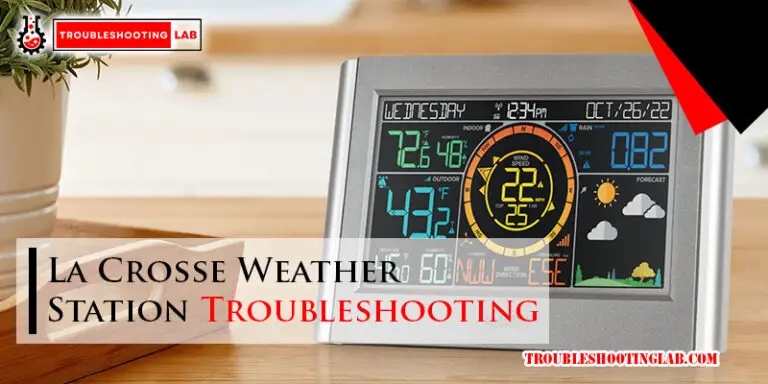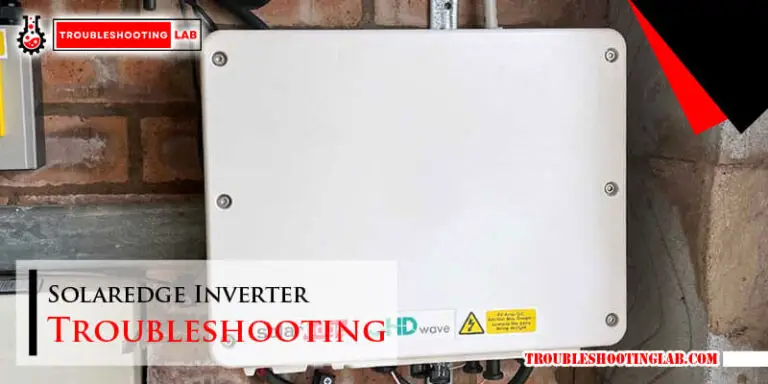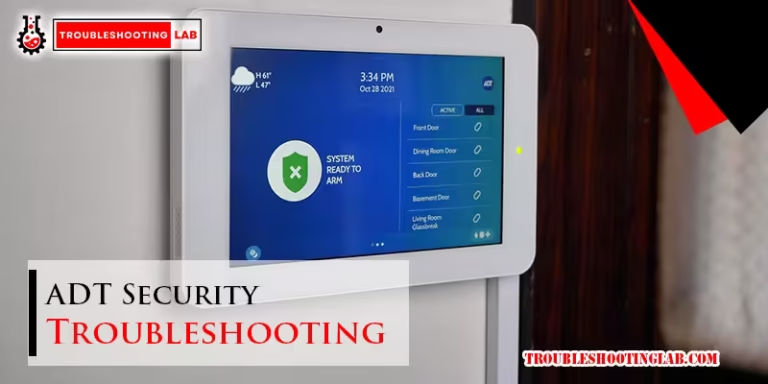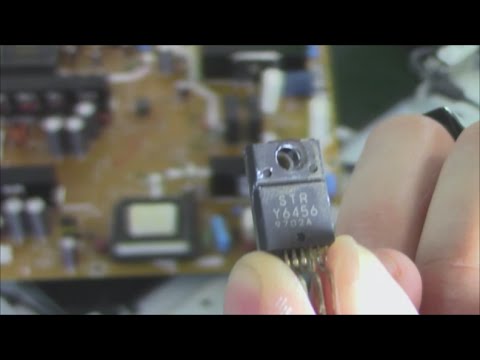JLG Scissor Lift Troubleshooting: Essential Tips for Quick Fixes
To troubleshoot a JLG scissor lift, first check the battery charge indicator lights in the control box to determine the battery level. Then, ensure the key is switched on and check for any fault codes displayed.
Finally, inspect the cord to the control box for any issues. If a fuse needs to be replaced, it is located behind the engine tray near the start and auxiliary power solenoids. To clear a fault code, the underlying issue must be addressed, and the machine must be restored to working order.
Following a proper maintenance program is crucial to ensuring the safe operation of the machine. Avoid modifying the machine without approval from JLG.

Understanding The Common Fault Codes
How To Interpret Fault Codes On A Jlg Scissor Lift
Understanding the fault codes on your JLG scissor lift can be crucial to identifying and resolving issues with your equipment. Fault codes are designed to provide valuable diagnostic information to help you troubleshoot and fix problems efficiently. However, deciphering these codes can be a challenge without the proper knowledge. Here are some tips to help you interpret fault codes on a JLG scissor lift:
- Refer to the manual: The first step in interpreting fault codes is to consult the service and maintenance manual provided with your JLG scissor lift. The manual will contain a comprehensive list of fault codes specific to your model, along with their meanings and suggested troubleshooting steps.
- Identify the code. When a fault occurs, your JLG scissor lift will display a specific fault code on the control panel. These codes are usually alphanumeric and can vary depending on the nature of the problem. Take note of the code displayed to begin troubleshooting.
- Cross-reference the code: Once you have identified the fault code, cross-reference it with the information provided in the manual. This will help you understand the underlying issue affecting your scissor lift.
- Decipher the meaning: Each fault code corresponds to a specific problem or malfunction within the scissor lift system. The manual will explain what each code means, enabling you to pinpoint the area of concern.
- Take appropriate action: After understanding the fault code and its meaning, follow the recommended troubleshooting steps outlined in the manual. This may involve inspecting certain components, checking connections, or resetting systems. By taking prompt action, you can resolve the issue efficiently and minimize downtime.
Tips For Troubleshooting Common Fault Codes
Dealing with fault codes on your JLG scissor lift can be a daunting task, but with the right approach, you can overcome these challenges. Here are some tips to help you troubleshoot common fault codes effectively:
- Perform regular maintenance: Regular maintenance and inspections can help prevent the occurrence of common fault codes. By keeping your scissor lift in optimal condition, you can minimize the likelihood of encountering issues.
- Check connections. Fault codes are often triggered by loose or faulty connections. Make sure to inspect all electrical connections, cables, and wiring harnesses for signs of damage or looseness. Secure any loose connections and replace damaged components as necessary.
- Inspect sensors and switches: Fault codes can also be caused by malfunctioning sensors or switches. Inspect these components for any physical damage or abnormalities. Clean or replace them as needed.
- Reset systems: In some cases, fault codes can be cleared by simply resetting the system. Use the proper procedure outlined in the manual to reset the affected component or system.
- Seek professional help if needed. If you are unable to resolve the issue or if the fault codes persist, it is advisable to seek assistance from a qualified technician or the manufacturer’s support team. They have the expertise and resources to diagnose and repair complex problems.
Importance Of Addressing Fault Codes Promptly
Addressing fault codes promptly is crucial to maintaining the performance and safety of your JLG scissor lift. Ignoring or neglecting fault codes can lead to further damage, equipment failure, and potential safety hazards. Here’s why it is important to address fault codes promptly:
- Preventing further damage: Fault codes often indicate underlying issues that can worsen if left unattended. By addressing fault codes promptly, you can prevent further damage to critical components and systems.
- Minimizing downtime: Equipment downtime can be costly and disrupt workflow. Promptly addressing fault codes ensures that your scissor lift is back in operation quickly, minimizing downtime and maximizing productivity.
- Ensuring safety: Fault codes may indicate safety-related issues that can compromise the well-being of operators and personnel. Addressing these codes promptly helps maintain a safe working environment and reduces the risk of accidents.
- Prolonging equipment lifespan: Timely resolution of fault codes helps maintain the overall health and longevity of your scissor lift. By addressing issues promptly, you can prevent premature wear and tear and extend the lifespan of critical components.
By following these tips and prioritizing the prompt resolution of fault codes, you can ensure the optimal performance, safety, and longevity of your JLG scissor lift.
Electrical Issues And Troubleshooting
When it comes to JLG scissor lift troubleshooting, electrical issues can often be a common problem. Understanding how to diagnose and fix these issues is crucial to keep your scissor lift operating smoothly. In this section, we will discuss some common electrical issues that you may encounter and provide troubleshooting tips to help you resolve them effectively.
Checking The Battery Charge And Connections
One of the first things you should do when troubleshooting electrical issues on a JLG scissor lift is to check the battery charge and connections. A low battery charge or loose connections can cause various electrical malfunctions. To check the battery charge, locate the battery charge indicator lights usually located in the control box.
Make sure the key is switched off before checking the battery charge. If the indicator lights show a low charge, you may need to recharge or replace the battery. Additionally, inspect the battery connections to ensure they are secure and free from any corrosion or damage. Loose or corroded connections can impede the flow of electrical current and result in malfunctioning lift operations.
Understanding The Role Of Fuses And Their Locations
Fuses play a crucial role in protecting your scissor lift’s electrical system. They are designed to break the circuit and prevent damage in case of electrical overload or short circuit. In JLG scissor lifts, the fuses are typically located behind the engine tray near the start and auxiliary power solenoids.
If you are experiencing electrical issues, it is essential to check the fuses to see if any of them are blown. A blown fuse can disrupt the power supply to the generator control system, disabling the lift’s functionality. If you find a blown fuse, replace it with a new one of the same rating to restore the circuit and resolve the electrical issue.
Resetting Fault Codes And Clearing Error Indicators
JLG scissor lifts are equipped with fault code systems that provide error indicators to help diagnose electrical problems. When a fault code is displayed, it indicates a specific issue within the electrical system. To troubleshoot and fix these issues, resetting the fault codes and clearing the error indicators can be helpful.
To reset the fault codes, use the JLG handheld analyzer or refer to the machine’s service and maintenance manual for specific instructions. Once the fault codes have been cleared, monitor the lift’s operation to determine if the issue has been resolved. If the error indicators reappear, further troubleshooting may be necessary to identify the underlying electrical problem.
In conclusion, electrical issues can significantly impact the performance of a JLG scissor lift. By checking the battery charge and connections, understanding the role of fuses, and resetting fault codes, you can effectively troubleshoot and resolve common electrical problems. Remember to always refer to the manufacturer’s documentation and safety guidelines when working on electrical systems. By addressing these issues promptly, you can ensure the efficient and safe operation of your JLG scissor lift.
Hydraulic System Problems And Solutions
One of the key components of a JLG scissor lift is its hydraulic system. This system is responsible for raising and lowering the platform, and any issues with it can disrupt the smooth operation of the lift. In this section, we will discuss some common hydraulic system problems that scissor lift operators may encounter and provide solutions to address them effectively.
Identifying Leaks And Addressing Them
Leaking hydraulic fluid is a common problem that needs immediate attention. Leaks can occur due to damaged hoses, loose connections, or worn-out seals. It is essential to identify and address leaks promptly to prevent further damage and ensure the efficient functioning of the scissor lift.
To identify leaks, visually inspect the hydraulic system, paying close attention to any visible fluid drips or stains. Check all hydraulic hoses, fittings, and connections for signs of wear or damage. If a leak is detected, it is crucial to tighten loose connections or replace faulty hoses and seals. Regularly inspecting and maintaining the hydraulic system can help prevent leaks and ensure optimal performance.
Troubleshooting Issues With The Hydraulic Pump
The hydraulic pump is responsible for generating the pressure required to lift the scissor lift platform. If the pump malfunctions, the lift may fail to raise or lower properly. It is essential to troubleshoot any issues with the hydraulic pump to ensure the smooth operation of the scissor lift.
Some potential problems with the hydraulic pump include a decrease in pressure, unusual noises, or slow operation. To troubleshoot these issues, first, check the fluid level and top it up if necessary. Next, inspect the pump for any signs of damage or wear, such as worn-out gears or a damaged shaft.
If no visible issues are found, it may be necessary to consult the scissor lift’s maintenance manual or contact a qualified technician. They can perform further diagnostic tests, such as checking pump performance with a pressure gauge or using specialized tools to identify any internal pump malfunctions.
Importance Of Proper Maintenance And Fluid Levels
Proper maintenance and monitoring of hydraulic fluid levels are crucial to ensuring the optimal performance and longevity of the scissor lift’s hydraulic system. Regularly checking the fluid level and maintaining it within the recommended range is essential.
Low fluid levels can cause the hydraulic system to operate inefficiently, leading to issues such as slow operation, reduced lifting capacity, or even pump damage. Conversely, overfilling the hydraulic system can create excess pressure and strain on the components, causing leaks or premature wear.
Additionally, it is crucial to use the recommended hydraulic fluid specified by the scissor lift manufacturer. Using the wrong type of fluid can lead to damage to seals and other components, resulting in costly repairs and downtime.
In conclusion, addressing hydraulic system problems promptly is essential for the smooth operation of a JLG scissor lift. Identifying and addressing leaks, troubleshooting issues with the hydraulic pump, and maintaining proper fluid levels are key steps in ensuring optimal performance and avoiding costly breakdowns.
Control Box And Wiring Problems
Checking The Control Box For Faults And Damage
The control box of a JLG scissor lift plays a crucial role in its operation. However, it is not immune to faults or damage. To ensure smooth functioning, it is important to regularly inspect the control box for any issues. Look for signs of physical damage such as cracks, dents, or water ingress. These can indicate potential problems that may affect the performance of the scissor lift. Additionally, check the control box for any loose or disconnected wires. These can cause erratic behavior or complete failure of the machine.
Inspecting The Wiring For Loose Connections Or Damage
In addition to the control box, you should also pay close attention to the wiring of the JLG scissor lift. Loose connections or damaged wires can result in intermittent or no power supply to the control box. This can lead to issues like non-responsive controls or erratic movements. Inspect all the wiring connections thoroughly, ensuring they are securely fastened. Look for any signs of frayed or damaged wires, as these can cause electrical shorts or malfunctions. Repair or replace any faulty wiring to maintain the reliability and safety of the scissor lift.
Troubleshooting Issues With The Control Box Buttons And Switches
The buttons and switches on the control box are essential for operating the JLG scissor lift. If these components do not function properly, it can hinder the productivity and efficiency of the machine. To troubleshoot issues with the buttons and switches, start by checking for any physical damage or excessive wear. Replace any worn-out components that may affect the responsiveness of the controls. Additionally, make sure the buttons and switches are clean and free from debris or obstructions. Dirt or debris can interfere with the proper functioning of these components.
If the buttons and switches are in good condition, but still not working correctly, consult the scissor lift’s manual or contact a professional technician. They can help diagnose and resolve more complex issues, such as faulty wiring connections or control box malfunctions. Regular maintenance and prompt troubleshooting of control box and wiring problems are key to keeping your JLG scissor lift running smoothly and safely.
Safety Precautions And Preventive Maintenance
When it comes to operating scissor lifts, safety should always be the top priority. Regular inspections and preventive maintenance play a crucial role in ensuring the safe and efficient functioning of these machines. In this section, we will discuss the importance of regular inspections and maintenance, as well as provide tips for preventing common issues and breakdowns. Additionally, we will outline key safety precautions when troubleshooting and repairing scissor lifts.
Importance Of Regular Inspections And Maintenance
Regular inspections and maintenance are essential for keeping scissor lifts in optimal condition. By conducting routine inspections, operators can identify potential issues before they escalate into major problems. This proactive approach helps prevent unexpected breakdowns and ensures the safety of both the operators and other personnel working in the vicinity of the scissor lifts.
Performing regular maintenance tasks, such as lubricating moving parts, checking hydraulic system components, and inspecting electrical connections, helps prolong the lifespan of scissor lifts and reduces the risk of failures. It also ensures that the lifts operate smoothly and efficiently, optimizing their performance.
Tips For Preventing Common Issues And Breakdowns
Preventing common issues and breakdowns can save time, money, and effort. Here are some tips to help you keep your scissor lifts in excellent condition:
- Follow the manufacturer’s guidelines for regular maintenance and servicing.
- Keep the scissor lift clean and free from debris to prevent clogs and damage to sensitive components.
- Inspect and tighten all nuts, bolts, and fasteners regularly to ensure proper stability and structural integrity.
- Check the condition of the tires and replace them if worn or damaged.
- Monitor the battery charge level and recharge or replace batteries as needed.
- Train operators on proper usage and handling of the scissor lifts to minimize the risk of accidents or mishaps.
- Keep a record of maintenance activities, including inspections, repairs, and parts replacement, for future reference.
Key Safety Precautions When Troubleshooting And Repairing Scissor Lifts
When troubleshooting and repairing scissor lifts, it is important to prioritize safety. Here are some key safety precautions to adhere to:
- Always disconnect the power source and lock out the scissor lift before starting any troubleshooting or repair work.
- Wear appropriate personal protective equipment (PPE), including safety goggles, gloves, and steel-toe boots.
- Ensure that the scissor lift is on a stable and level surface before attempting any repairs.
- Use proper tools and equipment for the task at hand and avoid improvising or using damaged tools.
- Refer to the manufacturer’s manual or guidelines for step-by-step instructions on troubleshooting and repairs.
- If you are unsure or unfamiliar with a particular repair, consult a qualified technician or service professional.
By following these safety precautions, you can minimize the risk of accidents and injuries while troubleshooting and repairing scissor lifts.
Frequently Asked Questions
Where Is The Fuse On A Jlg Boom Lift?
The fuse on a JLG boom lift is located behind the engine tray near the start and auxiliary power solenoids. If the fuse is blown, there will be no D/C voltage going to the generator control system.
How Do You Clear The Code On A Jlg?
To clear the code on a JLG, follow these steps: 1. Check the battery charge indicator lights in the control box. 2. Make sure the key is switched on. 3. If there is a fault code showing, refer to the troubleshooting manual for specific instructions.
4. Address the issue and fix the problem to clear the code. 5. A DTC will only be cleared once the machine is restored to good working order.
What Is Error Code 995 On Jlg?
Error code 995 on JLG indicates a power module failure personality range error. Check the battery charge indicator lights and make sure the key is switched. If a fault code is displayed, check the cord to the control box. Address the issue to clear the code.
What Is Code 77 On Jlg Scissor Lift?
Code 77 on a JLG scissor lift indicates a communication error between the control system and the platform. To resolve this issue, check the battery charge, ensure the key is switched correctly, and inspect for any fault codes. If the problem persists, contact a professional for further troubleshooting.
How Do I Troubleshoot A Jlg Scissor Lift With No Power?
If your JLG scissor lift has no power, start by checking the battery charge indicator lights in the control box.
Conclusion
Troubleshooting JLG scissor lifts requires careful attention to detail and systematic problem-solving. From checking battery charge indicators to addressing fault codes, a thorough understanding of the machine is crucial. It is important to follow the maintenance manual and seek professional assistance if needed.
By following these tips and guidelines, operators can ensure the safe and efficient operation of JLG scissor lifts.





